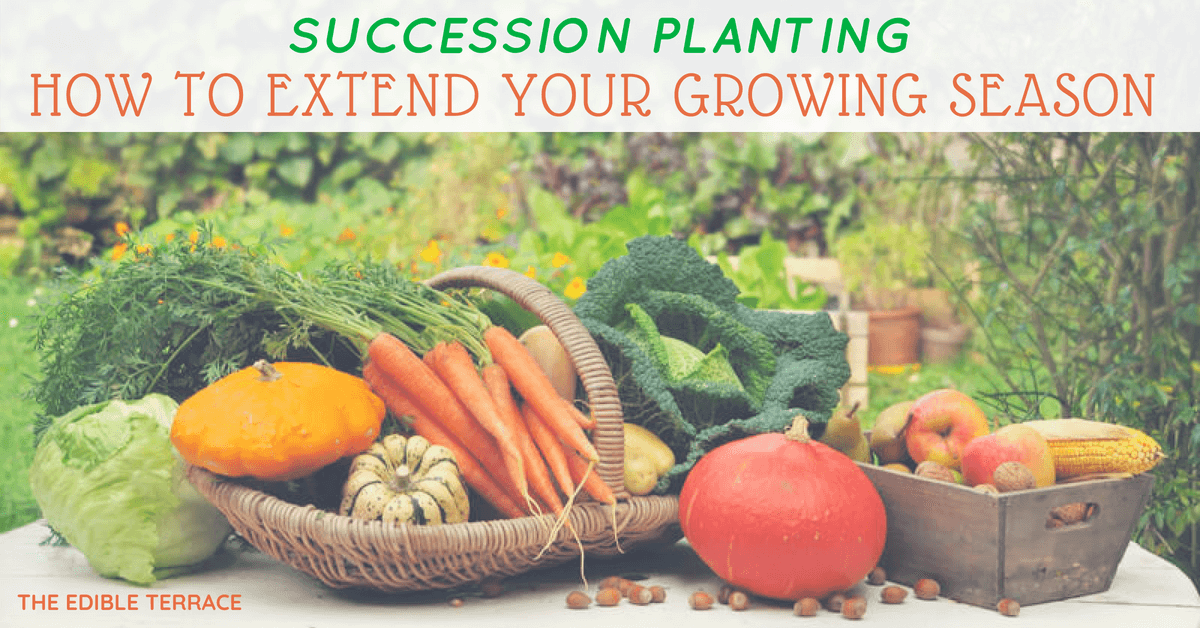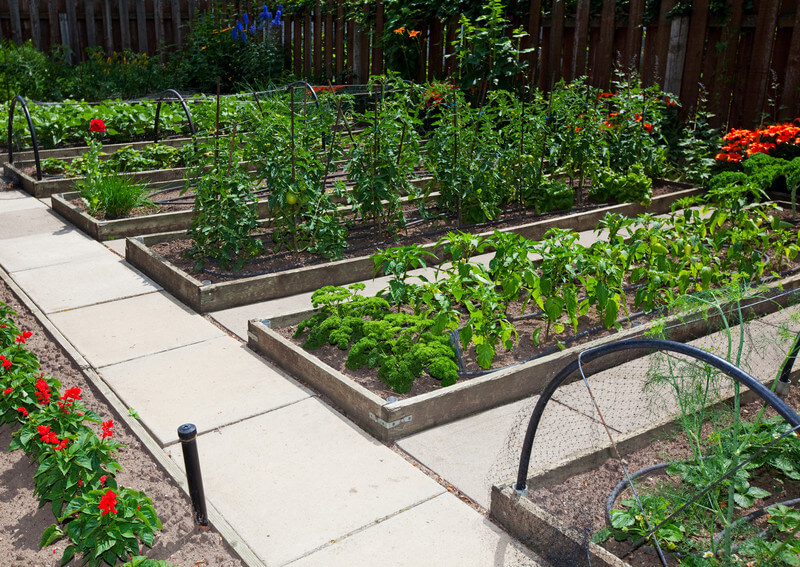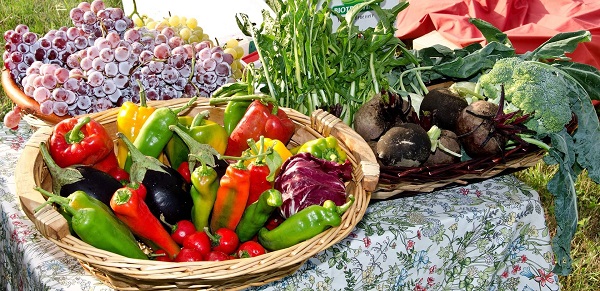Hey! By the way… TheEdibleTerrace is reader-supported. When you buy through links on our site, we may earn an affiliate commission and as an Amazon affiliate, we earn from qualifying purchases. Thanks in advance for your support!

If you have a small amount of space to plant a vegetable garden, you are probably eager to get the most out of it. Succession planting is a great way to accomplish this because it will [easyazon_link identifier=”B01MG1OJ4D” locale=”US” tag=”edibleterrace-20″]extend the growing season[/easyazon_link] of your garden.
What is Succession Planting?
This practice involves growing the same or complementary crops in the same spot continuously throughout the season in order to maximize the yield a garden can produce. In other words, succession planting combines the efficient use of space and timing to obtain better results.
 Many novice gardeners mistakenly believe that planting and sowing seeds is a one-and-done process that only happens at the beginning of the growing season. So, they head out to the garden each spring, get some plants and seeds in the ground… and wait for the magic to happen.
Many novice gardeners mistakenly believe that planting and sowing seeds is a one-and-done process that only happens at the beginning of the growing season. So, they head out to the garden each spring, get some plants and seeds in the ground… and wait for the magic to happen.
Unfortunately, following this one-off approach to planting is almost guaranteed to cause many peaks and valleys in what can be harvested throughout the season. If you want your garden to produce an abundant supply of fresh produce all season long, you need to plan ahead for it.
Create A Succession Planting Plan
To create a successful succession-planting plan for your garden, you need to take a number of variables into account. For example, you’ll want to consider how long each crop takes to reach maturity, how long it produces once mature, and which crops can be harmoniously planted in the same space at different times throughout the season.
Although the number of variables involved in succession planting may seem a little intimidating at first, don’t let that discourage you. It may take some practice, but you can definitely get the hang of it.
If you are just starting out, choose only one or two beds or containers to practice in your first year. Also, take detailed notes in your [easyazon_link identifier=”0692573984″ locale=”US” tag=”edibleterrace-20″]garden journal[/easyazon_link] throughout the growing season so you know what worked – and what didn’t – when next season rolls around.
Getting Started with Extending Your Growing Season
Before you start digging in the dirt, you’ll want to have a good idea of what you plan to grow. Start by making a list of which plants you want to grow in your succession planting area. As you are compiling this list, make sure you note the correct variety of each plant, because there is a lot of diversity among different varieties of the same plant species.
Then, next to each plant variety on your list:
- Note how long that particular plant takes to reach maturity?
- Is it heat or cold tolerant?
- How many hours of sunlight it needs each day?
- What type of soil it prefers, and its spacing requirements?
 The back of seed packets and garden catalogs are great starting points for this exercise.
The back of seed packets and garden catalogs are great starting points for this exercise.
Once you know what you’d like to grow in your selected space, decide if you want to focus on growing the same crop throughout the season or if you want to try inter-planting more than one variety. Lettuce and herbs like basil and cilantro are great for repeated sowing all season long. However, if you want to try more than once crop, try to find a couple of recommended companion plants for your favorite choices.
If you need more information on [easyazon_link identifier=”1580170277″ locale=”US” tag=”edibleterrace-20″]companion planting[/easyazon_link], there are tons of great resources and books available on this topic. The best ones provide a lot of great information to help in your planning process. Online resources are nice, but it’s always good to have a hard copy on hand for future reference.
Succession Gardening Tips

Single Crop vs. Multiple Crop Strategies
There are a couple of ways you can approach succession planting. One option is to focus on growing a single crop in a defined area. The other option is to inter-plant several complementary plant species within the same area.
Regardless of which option you choose, it’s a good idea to start small with one or two beds until you get the hang of creating a planting schedule that works for you. In general, experimenting with a single type of plant or several that are closely related, such as different types of salad greens, is also recommended.
Successive Planting vs. Simultaneous Planting
Depending on what plants you plan to grow, you can either employ successive planting, simultaneous planting, or a combination of the two. Successive planting refers to planting small amounts of the seeds over and over again throughout the season. The seeds planted can be either from the same plant or from two or more complementary varieties or species.
On the other hand, simultaneous planting involves planting several varieties of either the same or different types of plants with varying maturity dates at once. Diverse plants with early, mid and late maturity varieties are ideal for simultaneous planting. Tomatoes are good examples.
The Best Plants for Successive Planting
 Lettuce and other salad greens are perfect choices for successive planting thanks to their fast growth cycle. The same can also be said for many herbs, such as basil and cilantro. The primary benefit to planting new seeds or seedlings every few weeks is that it ensures a continuous supply of fresh produce all season long.
Lettuce and other salad greens are perfect choices for successive planting thanks to their fast growth cycle. The same can also be said for many herbs, such as basil and cilantro. The primary benefit to planting new seeds or seedlings every few weeks is that it ensures a continuous supply of fresh produce all season long.
Temperature preference is another factor to consider when choosing two or more plants for successive planting. Some plants thrive during cooler seasons, while others are more tolerant of hot summer weather. By understanding what conditions your plants prefer, you can make the best use of your available growing space.
For example, you can plant cool weather crops like radishes and carrots early in the year and then again in late summer or early fall. In between, you can fill those beds with more heat-tolerant transplants such like eggplant or hot peppers.
Simultaneous Planting – Which Plants to Choose

The key to a successful simultaneous planting is to choose non-competing plants with different maturity dates. You’ll also want to note what type of root structure they have (shallow versus a single, deep tap root), how much water and sunlight they need, and which nutrients they require. If you get stuck, you may want to pick up a reputable [easyazon_link identifier=”1580080162″ locale=”US” tag=”edibleterrace-20″]companion planting resource[/easyazon_link] to answer any specific questions you may have.
Conclusion
Although succession planting may seem complicated at first, you’ll be amazed at how easily you can extend the growing season of your garden. By applying the principles of succession planting to your own backyard garden, you’ll soon be growing more fresh fruits, vegetables and herbs than you ever thought possible.
Succession Planting Charts
- Succession Planning Chart from National Sustainable Agriculture Assistance Program – https://attra.ncat.org/attra-pub/download.php?id=20
- UMASS Vegetable Successive Planting Chart https://ag.umass.edu/sites/ag.umass.edu/files/fact-sheets/pdf/vegetable_planting_chart_1%20%281%29.pdf

